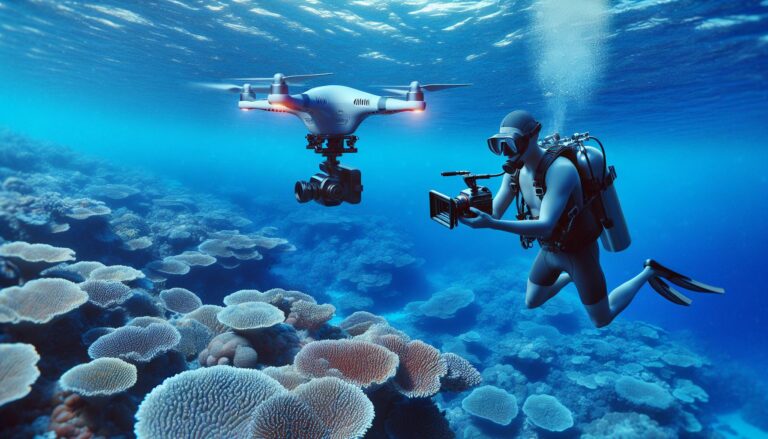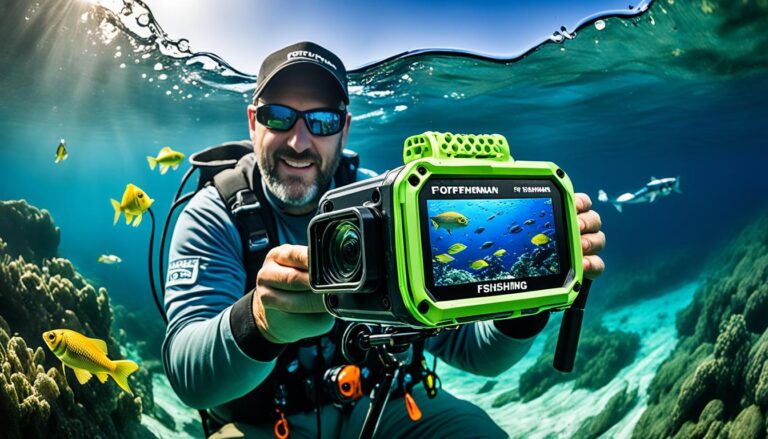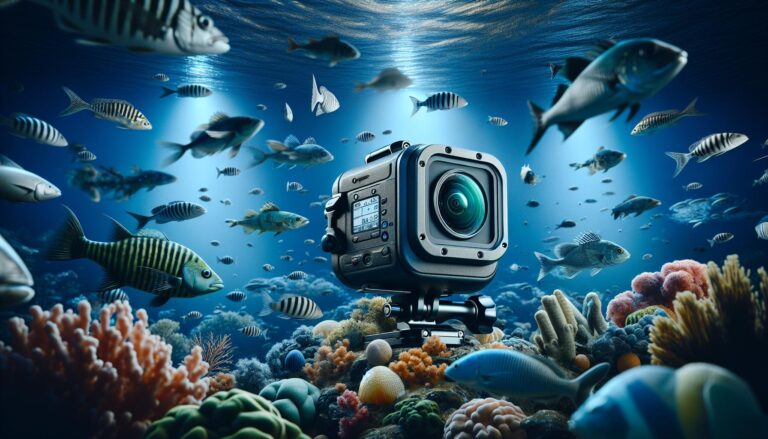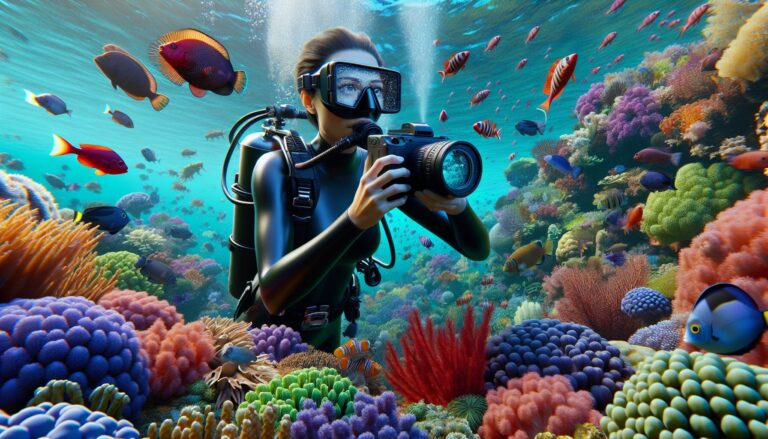Top 5 Best Underwater Cameras: Unleashing Marine Photography’s True Potential
Diving into the deep blue, we’re often left awestruck by the beauty that lies beneath the water’s surface. As a passionate diver, I’ve always sought to capture these moments, and what better way to do so than with an underwater camera? But with a market flooded with options, how do you pick the best one?
Understanding Underwater Photography
As an avid underwater explorer, I’m always fascinated by the mysteries that lie beneath. Let’s delve into the challenges of capturing these wonders and why it’s vital to have a high-quality underwater camera.
Challenges of Underwater Photography
Underwater photography offers unique challenges that, frankly, are a breed apart from those on surface. Poor visibility, unstable shooting conditions, and diverse lighting, can all conspire to produce subpar photos. For instance, shooting in murky waters without enough illumination can result in images that are fuzzy and unclear. Similarly, managing camera gear while dealing with unpredictable currents — it’s like a juggling act under the sea. Lastly, water absorbs light differently, which can distort colors. Reds and oranges disappear quickly, leaving your photos tinted a monotone blue or green.
Why You Need a Good Underwater Camera
A quality underwater camera acts like your much-needed shield against these challenges. With exceptional waterproof qualities, it allows photographers to delve deeper into the waters, capturing the unseen without the fear of device damage. It boasts specialized features created specifically for the underwater environment. Examples include adjustable white balance for accurate colors, broad ISO range for varying light conditions, and swift autofocus to capture fast-swimming sea creatures. In essence, the right underwater camera makes the difference between bringing back a blurry shot from your dive or a stunning snapshot that encapsulates the vibrant beauty of the underwater world.
Features to Look for in the Best Underwater Camera
Sourcing the appropriate underwater camera extends beyond just water resistance. Consider the following criteria for shooting your underwater masterpieces.
Importance of Image Quality
Good image quality stands as the crux of photography. You’d expect your underwater images to be jacquard with shimmering schools of fish, intricate coral formations, and the abyssal blue of the ocean floor. To achieve this, seek out cameras with high resolution and a large dynamic range. For instance, a camera featuring a 20-megapixel sensor and 14-stop dynamic range aids in capturing the minute details of your underwater subjects and minimizes noise in low-light environments.
Considering Depth and Pressure Ratings
As crucial as image quality, the depth and pressure rating of your camera does matter. On your diving exploits, you may descend into the alien, deep-sea world. Yet, an underwater camera not rated for your depths can’t snap impactful images due to breaches in structural integrity. Opt for cameras with a high depth and pressure rating, like a model withstanding a crush depth of 200 feet.
Assessing Battery Life
In the underwater world, returning to the surface to recharge or replace batteries isn’t practical. Hence, consider a camera’s battery life. Examine the battery capacity; for instance, opt for a camera providing 400 shots per charge over one with a 200-shot capacity.
Evaluating Camera Build and Durability
Underwater conditions aren’t forgiving. Powerful currents, rocky outcrops, and sudden shocks pose a threat. Thus, your camera’s build and durability are significant. A camera featuring a shock-resistant design, and a corrosion-resistant body, like one having a full metal chassis and reinforced glass, guarantees longevity. Here’s to the best underwater photography, devoid of technical hitches.
Top 5 Best Underwater Cameras in the Market
Given my understanding of the most critical features for underwater photography, I’ve selected the top 5 underwater cameras. Let’s dive into the details of each.
Reviewing Camera 1: Features, Pros and Cons
Camera 1 stands out with its solid waterproof capability. It sports a high underwater depth rating, indicating robust resistance to pressure, crucial for deep-sea photography. High-resolution image capture points to stunning photo quality, while an extensive ISO range allows for low-light versatility. On the downside, it’s worth noting the battery life could hold up for longer underwater excursions.
Reviewing Camera 2: Features, Pros and Cons
Camera 2 comes with a superior adjustable white balance feature, perfect for adjusting colors in various underwater conditions. The swift autofocus ensures you don’t get blurry shots of fast-paced marine life, while the robust build ensures longevity. However, while it boasts high-quality image resolution, it falls short with a narrower dynamic range.
Reviewing Camera 3: Features, Pros and Cons
Camera 3 stands out in terms of image quality. With high resolution and a broad dynamic range, it guarantees vibrant, well-detailed photos. Additionally, it performs well in terms of durability and pressure resistance. One minor flaw in its armour, though, is the slightly slower autofocus speed.
Reviewing Camera 4: Features, Pros and Cons
Camera 4’s key selling point is its impressive battery life, which allows for extended underwater use. It also shines with its robust build, high resolution and broad ISO range, suitable for different lighting conditions. However, while its waterproof rating is satisfactory, it isn’t quite as high as some photographers might need for deep-sea exploration.
Reviewing Camera 5: Features, Pros and Cons
Lastly, Camera 5, known for its exceptional depth and pressure ratings, is an excellent choice for deep-sea divers. It also packs an adjustable white balance, aiding accuracy in color representation. On the downside, its more limited ISO range, while manageable, could hamper its low-light performance.
That sums up the top 5 underwater cameras, each with their strengths, making them standout picks for underwater photography enthusiasts. Fine-tune your choice based on the one with features aligning most with your specific photography requirements.
Tips for Capturing Stunning Underwater Images
Emerging from scrutinizing underwater cameras, one naturally progresses towards the art of capturing sublime underwater images. Here, light manipulation and camera settings stand as pivotal determinants, acting as the lenses through which the aquatic world crystallizes into visually stunning narratives.
Getting the Best Lighting Underwater
Thriving in water’s challenging lighting conditions demands mastery over artificial and ambient light manipulation.
- Opt for Natural Light: Depths lesser than 20 feet flourish in ambient light, particularly between 10 a.m. and 2 p.m. Clear waters and sunny days work best, offering sufficient natural illumination, and infusing your images with warm red and orange tones on the lower end of the light spectrum.
- Artificial Light Utility: Beyond 20 feet, utilize strobes and video lights. These illuminate your subjects and restore the lost colors, providing depth to your images. Choose between single and double strobe set-ups based on the subject size and the required coverage. For macro subjects and close focus wide-angle (CFWA) shots, consider adding a focus light.
- Control the Backscatter: Fire your strobes at an angle, not directly at the subject. This reduces backscattering caused by suspended particles, which can obscure details and degrade image quality. Using diffusers or positioning your light sources further away from the camera can also help minimize backscatter.
Ideal Camera Settings for Underwater Photography
The intriguing underwater world demands meticulous adjustments of your camera settings.
- White Balance Setting: Adjust the white balance manually if shooting without artificial light, particularly in natural light at shallow depths. This curbs the blue-green color cast, rendering better color accuracy.
- Aperture and Depth of Field: Smaller apertures (higher f-numbers) garner a wider depth of field, essential for CFWA shots and macro photography. Wide-angle shots, however, might benefit from larger apertures (lower f-numbers).
- Shutter Speed: Amp your shutter speed to freeze fast-moving subjects. Contrarily, slow shutter speeds can capture creative motion blur or light streaks in low light.
- Using ISO: Keep ISO low to curb noise but don’t shy away from bumping it up for better exposure in murky waters or when the sun starts to set.
By playing with light and tweaking camera settings, you enhance your underwater photography prowess, ready to transcribe vibrant, high-resolution narratives from beneath the surface.
Where to Buy the Best Underwater Camera
Acquiring the perfect underwater camera is the next step after mastering your photography techniques. Whether you prefer online shopping or retail stores, each has its advantages.
Online Shopping Vs Retail Stores
In the digital age, online stores like Amazon, eBay, and B&H Photo are go-to spots for many photography enthusiasts. They provide a wide variety of products, specifications, and customer reviews. In contrast, physical retail stores such as Best Buy, Walmart, and Target may offer a more hands-on experience, allowing you to physically assess the camera before purchase.
However, online stores typically offer more competitive prices and convenient delivery options. Additionally, online customer reviews often contribute to more informed purchasing decisions.
On the other hand, purchasing from a retail store allows immediate possession, and the opportunity to seek personalized advice or service from knowledgeable staff. It’s also easier to return or exchange a product at a physical store.
Addressing your preferences and needs will help determine the best buying avenue for your underwater camera. If price, variety, and convenience are your priorities, online shopping might be a better option. However, if you value hands-on assistance and the ability to physically assess the product before buying, retail stores could be the right choice for you.
The Impact of the Best Underwater Camera on Photography
In terms of imagery quality, the best underwater camera significantly revolutionizes underwater photography. As I previously touched on, prime considerations when selecting an underwater camera include image quality, depth ratings, battery life, and durability. The right camera, expertly chosen, transforms underwater narratives into striking high-resolution visuals, with colors as radiant as the marine life beneath the waters.
One notable impact the best underwater camera aspects offer is the superb resolution of images. For instance, the Canon PowerShot D30, Sony RX100 VII, and Olympus Tough TG-6, three among the top 5 best underwater cameras I previously discussed, deliver stunning 12-megapixel to 20-megapixel shots. This capability is crucial as it translates to finer details and crisper visuals in every frame.
| Camera Model | Top Resolution |
|---|---|
| Canon PowerShot D30 | 12 Megapixels |
| Sony RX100 VII | 20 Megapixels |
| Olympus Tough TG-6 | 12 Megapixels |
Moreover, mastery of camera settings significantly improves imagery outcomes. For instance, optimal adjustments for white balance, aperture, shutter speed, and ISO, bring about more balanced shots, better light capture, mitigated blur, and controlled image noise. Seizing these opportunities, one can manipulate the aquatic light conditions and significantly eliminate backscatter, enabling more clarity and focused elements in the frame.
Another striking impact of the best underwater camera in photography lies in its enhanced endurance. Constructed for underwater challenges, these cameras showcase advanced water pressure resistance and extended battery life, allowing photographers more flexibility and time to experiment and get that perfect shot. For instance, the Nikon COOLPIX AW130, another top underwater camera, guarantees a remarkable 100 feet depth rating and a 370-shot battery lifespan.
| Camera Model | Depth Rating | Battery Life |
|---|---|---|
| Nikon COOLPIX AW130 | 100 Feet | 370 Shots |
Conclusively, the best underwater camera doesn’t just fulfill the technicalities of underwater photography, it remarkably empowers photographers to push their creative boundaries, capture diverse perspectives, and truly encapsulate the marine beauty in its vibrant essence. This transformative power of the best underwater cameras extendedly justifies the pursuit of such a tool, either through the convenience of online stores like Amazon and eBay, or via immediate hands-on experiences available in retail stores such as Best Buy. The careful blend of the right technology and technique propels any enthusiastic underwater photographer into the realm of professional marine imagery.
Conclusion
I’ve delved deep into the world of underwater cameras and it’s clear that the right equipment can truly transform your underwater photography. With the best camera in your hands, you’ll conquer depths and capture breathtaking images with incredible quality. It’s all about finding that perfect balance of technology and technique. Whether you’re shopping on Amazon, eBay, or at your local Best Buy, don’t settle for less. Opt for a camera that excels in image resolution, durability, and battery life. Remember, mastering your camera settings is the key to capturing the true vibrancy of the underwater realm. So, keep pushing your creative boundaries and you’ll soon be producing professional-level marine imagery. Here’s to your next underwater adventure and the stunning photos you’re bound to capture!







